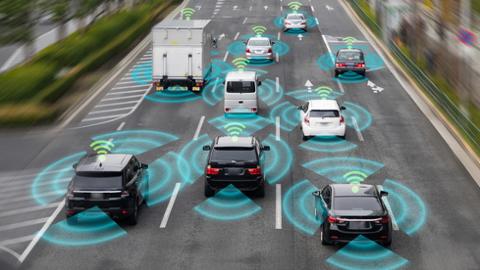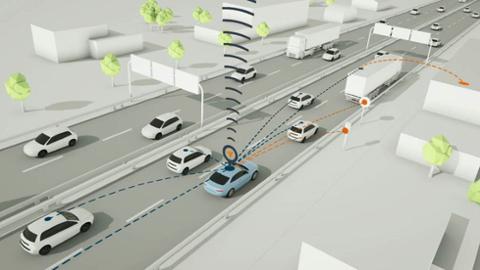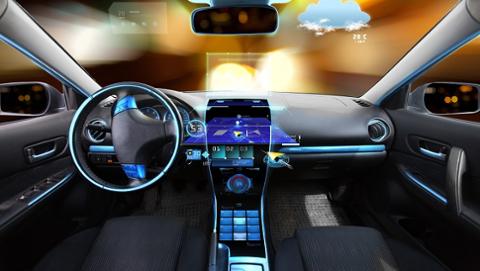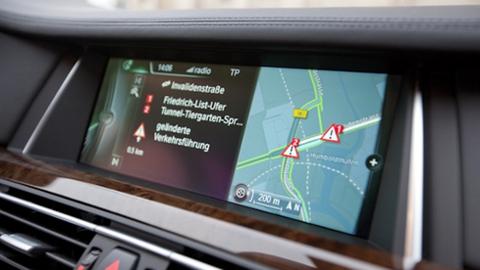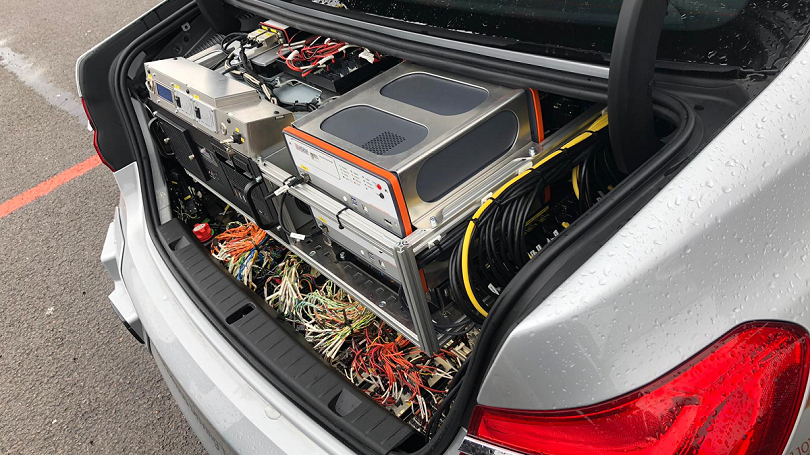
Source: BMDV
Germany is to play a leading role in autonomous driving. To make optimum use of the great potential inherent in autonomous and connected driving, the Federal Government intends to advance research and development, thereby making the mobility of the future more diverse, safer, more environmentally friendly and more user-focused.
The Federal Ministry for Digital and Transport is working intensively on further improving the framework conditions: As early as on 21 June 2017, the Act on Automated Driving (Eighth Act amending the Road Traffic Act) entered into force. The key elements of this Act are the changed rights and duties of drivers during an automated driving phase. This means that automated systems (level 3) are allowed to assume the driving task if certain conditions are met. A driver continues to be necessary, but in automated mode he/she may divert their attention from the traffic environment and the vehicle control.
Now comes the next step. With the new Act on Autonomous Driving, we have established the regulatory framework for autonomous motor vehicles (level 4) to be allowed to operate in regular public road transport in determined operational areas – all across Germany.
- Germany will thus be the first country in the world that brings driverless vehicles from research into everyday life.
- Our aim is to make it possible for vehicles with autonomous driving functions to be deployed in regular operations by 2022.
The new Act focuses on flexibility. The operation of driverless motor vehicles will be made possible for as many deployment scenarios as possible. The different use cases will only be geographically limited to a determined operational area but not yet exhaustively regulated. Individual approvals, exemptions and conditions such as the presence of a security driver, who is ready to intervene at all times, are thus unnecessary.
The deployment scenarios include:
- shuttle services from point A to point B;
- people movers (buses operating on an established route);
- hub2hub services (e.g. between two distribution centres);
- demand-driven offers in off-peak hours;
- transport of persons and/or goods on the first or last mile;
- dual mode vehicles such as in automated valet parking (AVP).
Among other things, the Act lays down new provisions for the following:
- technical requirements in terms of construction, characteristics and equipment of motor vehicles with autonomous driving functions,
- testing and procedures for the issuance of a type-approval for motor vehicles with autonomous driving functions by the Federal Motor Transport Authority (KBA),
- obligations of the persons involved in the operation of motor vehicles with autonomous driving functions,
- data processing with regard to the operation of motor vehicles with autonomous driving functions,
- facilitation of the (subsequent) activation of automated and autonomous driving functions for vehicles that have already been type-approved (“dormant functions”),
- also adaptation and creation of uniform rules to allow the trialling of automated and autonomous motor vehicles.
At the same time, the automotive industry is to intensify its efforts with regard to autonomous driving. As agreed at the 3rd meeting of the “Concerted Action on Mobility” on 8 September 2020, the industry will systematically use the trialling opportunities in Germany so that people can experience automated and autonomous vehicles at first hand – in particular in rural areas.
The Federal Ministry for Digital and Transport will evaluate the effects of the Act after the end of 2023, in particular with a view to the developments that have taken place in the meantime in the field of autonomous driving and the evolution of international rules and regulations as well as the compatibility with data protection provisions. The German Bundestag will be informed about the results.
International rules and regulations
The Act on Autonomous Driving is an interim solution until internationally harmonised provisions enter into force. With a view to harmonised markets and standards, Germany is taking great interest in creating overarching rules. The ministry will strongly advocate evolving the legal framework at EU and UNECE levels.
Germany is already driving innovation at international level. Also thanks to a German initiative, the level 3 lane keeping assistance system (ALKS — Automated Lane Keeping System) up to a speed of 60 km/h on motorways, which may, for example, be used in traffic jams, has been adopted at UN level. Germany is also currently actively involved in amending the UN regulation on ALKS. The aim is to change the legal system in such a way as to allow for speeds of up to 130 km/h and to enable it to perform lane changes.
The roadmap:
- The departmental draft was adopted by the Cabinet on 10 February 2021 and subsequently submitted to the German Bundestag and the Bundesrat.
- The Bundesrat commented on the bill on 26 March 2021.
- After a public consultation of experts in the Committee on Transport and Digital Infrastructure, which has lead responsibility here, in the German Bundestag on 3 May 2021, the Committee approved the bill at its 113th meeting on 19 May 2021 with the proviso that an amendment proposal of the coalition parliamentary groups be accepted.
- The EU notification procedure initiated in parallel was concluded on 10 May 2021.
- The Bundestag adopted the bill on 20 May 2021.
- The Bundesrat gave its consent to the bill on 28 May 2021.
- The Act will now be signed into law by the Federal President and promulgated in the Federal Law Gazette. The Act might enter into force as early as within the next weeks.
The bill can be accessed here (in German).
Levels of vehicle automation
- Partial automation (level 2): This is the current state-of-the-art. The tasks the car can perform are becoming more and more complex - even if the driver still has to continuously monitor the system and the environment and has to be able to resume vehicle control at any time. This includes, among other things, automated parking or motorway assistance systems. The motorway assistance system performs, e.g. during overtaking, the automated lateral and longitudinal control up to a certain speed and within certain limits (lane keeping possible).
- Conditional automation (level 3): Cars will autonomously perform specified tasks such as braking, steering, changing lanes or overtaking, e.g. when driving on motorways. In this mode, drivers may temporarily divert their attention from the traffic environment and driving, e.g. to take care of children in the back seat. If a situation can no longer be managed automatically, the driver will be prompted to take over again. The technical regulation required for level 3 was adopted at UN level under the active involvement of Germany in June 2020 and entered into force on 22 January 2021. This function may only be activated on motorways and is limited to a maximum driving speed of 60 km/h. Currently, amendments to the UN regulation concerning Automated Lane Keeping Systems (ALKS) are already being worked on. The aim is to change the legal system in such a way as to allow for speeds of up to 130 km/h and to enable it to perform lane changes.
- High automation (level 4): If constructed appropriately, the system is able to autonomously perform specified tasks, as in level 3, but does no longer have to be monitored by a physically present driver. This means that the system assumes complete control of the vehicle; the vehicle occupants are only passengers. If the automated mode has to be aborted, the system will prompt the driver or the external technical oversight to take over. If the driver or the technical oversight does not react, the system is able (unlike in level 3) to autonomously place the motor vehicle in a minimal risk condition (e.g. stop the vehicle on a hard shoulder). The passengers are also able to prompt an emergency stop at any time.
- Full automation (level 5): The vehicle operates without a driver; monitoring is no longer required. The vehicle is able to autonomously master complex situations, such as at junctions or pedestrian crossings. Journeys without passengers are also possible.
